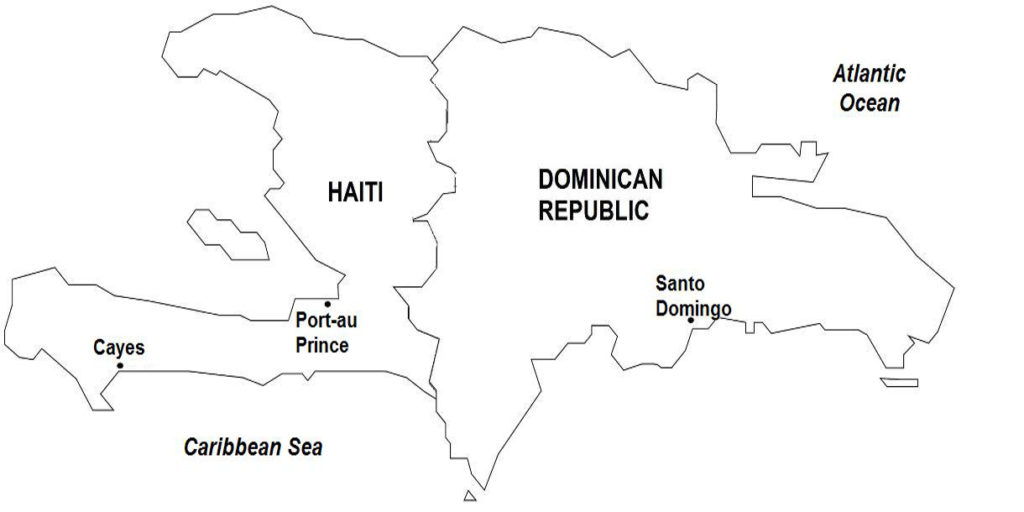(Taken from United States Occupation of Haiti, 1915 – 1934 – Wars of the 20th Century – Volume 3)
On July 28, 1915, Haitian President Vibrun Sam, an ally of the United States, was killed in a riot that broke out after he ordered the execution of his political enemies. Pandemonium broke out in the Haitian capital of Port-au-Prince, where anti-American elements led by Rosalvo Bobo moved to take control of the government. Declaring the need to protect American citizens and American commercial interests in Haiti, U.S. President Woodrow Wilson acted swiftly, and U.S. Marines were landed in Port-au-Prince. After some fighting, the U.S. forces expelled the anti-American militia from the capital.

The American intervention began a 19-year occupation of Haiti, prompted by the U.S. government’s determination to bring about stability in the Caribbean country and ensure that Haiti repaid the loan. Under U.S. pressure, a pro-American government, led by President Sudre Dartiguenave, was installed in August 1915, which held only limited authority. The two countries signed a bilateral treaty, whereby Haiti practically became a U.S. protectorate, as the Caribbean country’s political, judicial, military, and economic policies came under the authority of first, the U.S. occupation force, and later by the American High Commissioner’s Office, which was set up by the U.S. government. The United States took control of Haiti’s treasury, customs, banking, and other revenue-generating agencies, and persuaded the Haitian government to pass laws that made Haiti pay back its foreign loans, especially to those from American and French creditors.
History of Haiti Haiti, a country that occupies one-third and the western section of Hispaniola Island in the Caribbean Sea, gained its independence in 1804 when black African plantation slaves rebelled and overthrew their French colonial masters, and then established their own government. Thereafter for the rest of the 1800s, Haiti experienced political instability and social unrest because of its weak governmental, security, and economic infrastructures, with successive governments being deposed as a result of coups, revolts, and civil wars.
Largely because of a massive foreign debt, particularly to France, Haiti constantly experienced economic difficulties. In the post-war agreement signed between Haiti and France in 1824, France promised not to invade Haiti, and recognized Haiti’s independence. In return, Haiti promised to pay France a large indemnity, which became a heavy monetary load that crippled Haiti’s economy.
By the early 1900s, German Haitians (ethnic Germans who had immigrated to Haiti) had established large businesses in Haiti, gaining control of the local economy that once was dominated by the French. The Germans had succeeded because many of them had married with Haiti’s mulatto elite, allowing them to join the ranks of local power and influence, as well as acquire the right to own Haitian land (which legally was forbidden to foreigners).
Background of U.S. Intervention in Haiti Haiti’s political instability continued into the early twentieth century – seven governments changed hands violently between 1911 and 1915. The United States viewed the Haitian situation with great concern, as Haiti was located fairly close to the Panama Canal, on which the U.S. government had invested a large amount of money to complete and which provided not only a substantial economic benefit to the Americans but also served as a vital strategic and military asset.
U.S. foreign policy at this time was based on the Monroe Doctrine*, which was aimed at deterring European involvement in the Western Hemisphere. In Haiti, the U.S. government looked with disfavor at the strong German and French diplomatic and economic influences. But of particular concern for the United States in 1915 were the German Haitians, as World War I had broken out in Europe and Germany had taken the initiative early in the war. The United States believed that Germany might intervene in Haiti’s political instability in order to protect German commercial interests. The American concern was increased when German Haitians made such a request for intervention to the German government. For the United States, a German military presence in Haiti would threaten American interests in the Caribbean region, particularly with regard to the Panama Canal.
Historically, the U.S. response to Haiti’s instability was to launch a direct military intervention: between 1876 and 1913, the American government sent troops to Haiti a total of 15 times during periods of unrest. In 1891, the United States had failed to persuade the Haitian government to allow the U.S. military to construct a naval base in Haiti. Nevertheless, the U.S. Navy kept a permanent watch of the waters off Haiti, which was part of American policy to maintain political and military control of the whole Central American and Caribbean regions.
In 1910, the United States loaned out a large amount of money to Haiti to help pay down the Caribbean country’s large foreign debt. The U.S. government, therefore, had its commitments, as well as its stakes, raised in Haiti. In 1914, Haiti rejected American attempts to impose more economic measures. Consequently, the United States withdrew $500 million of Haiti’s foreign reserves and transferred that amount to New York for safekeeping. The United States also gained control of Haiti’s National Bank.
